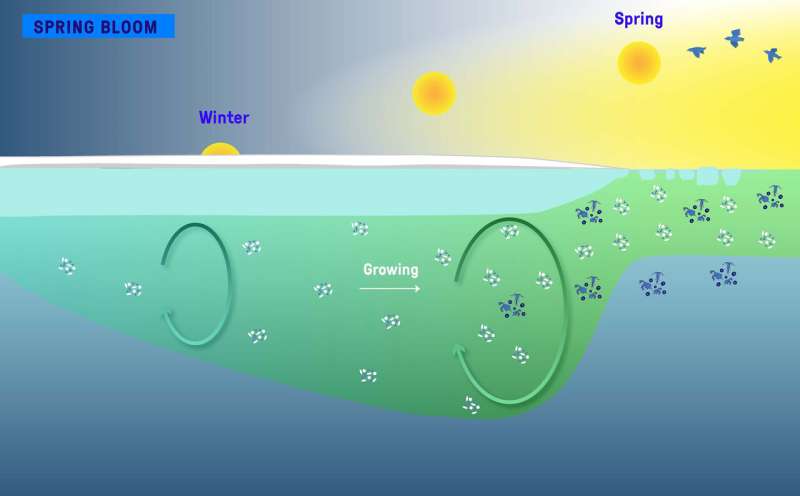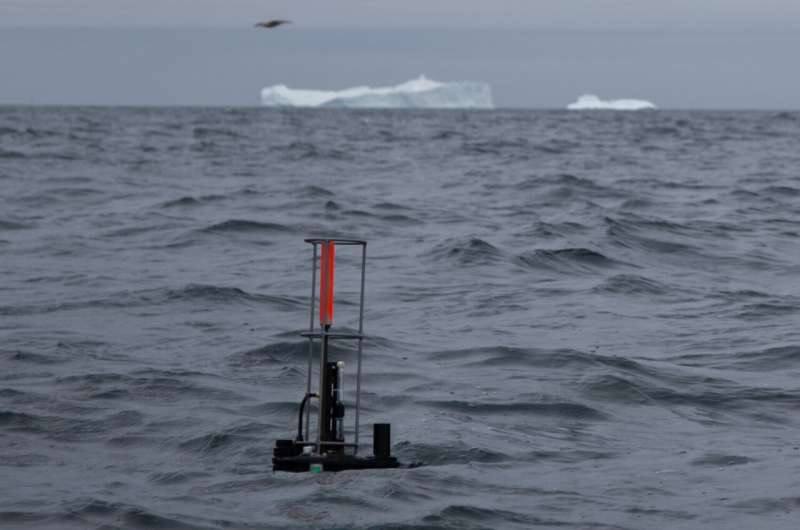September 28, 2020 report
Phytoplankton found to begin growing in Baffin Bay as early as February

A small international team of researchers has found that phytoplankton resumes growing in Baffin Bay as early as February. In their paper published in the journal Science Advances, the group describes how they deployed underwater profilers in Baffin Bay for two years and what they learned from the data they collected.
For many years there has been a consensus among marine biologists: phytoplankton ceases growing during the early winter in the Arctic Ocean when ice forms and does not resume growing until the ice melts in the spring. Then when the ice does finally melt, the phytoplankton are thought to explode with growth. In this new effort, the researchers have found that such thinking has been wrong. Phytoplankton can start growing even before the ice above it begins to melt.
To learn more about phytoplankton growth in the Arctic Ocean, the researchers deployed four Argo profilers in Baffin Bay. Such profilers are devices that are fitted with equipment that is able to measure both algae concentrations and their photosynthetic activity. Each of the profilers was also fitted with technology that prevented them from crashing into the ice on the surface of the bay. The profilers were deployed in the summer of 2017 and were kept in place until the summer of 2019. During that time, they drifted around between the surface and the bottom of the sea collecting data. To retrieve the data, the researchers had to wait until the ice melted allowing the profilers to surface and to send their data wirelessly.

In the winter, water freezes on the surface of Baffin Bay and the ice remains there covering the entire bay for the rest of the winter. Baffin Bay is also so far north that for parts of each winter, the sun never shines. Thus, the bay is dark and extremely cold. For these reasons, scientists have believed that phytoplankton must have to wait for the ice to thaw before it can start growing again.
When the researchers received data from the profilers, however, they found that phytoplankton in the bay began growing as early as February, when ice was still covering the bay, and when the sun just barely peeked over the horizon. This observation suggests that the explosive growth seen when the ice finally melts is not as explosive as has been thought—the phytoplankton has already been growing for months.
More information: Achim Randelhoff et al. Arctic mid-winter phytoplankton growth revealed by autonomous profilers, Science Advances (2020). DOI: 10.1126/sciadv.abc2678
Journal information: Science Advances
© 2020 Science X Network




















